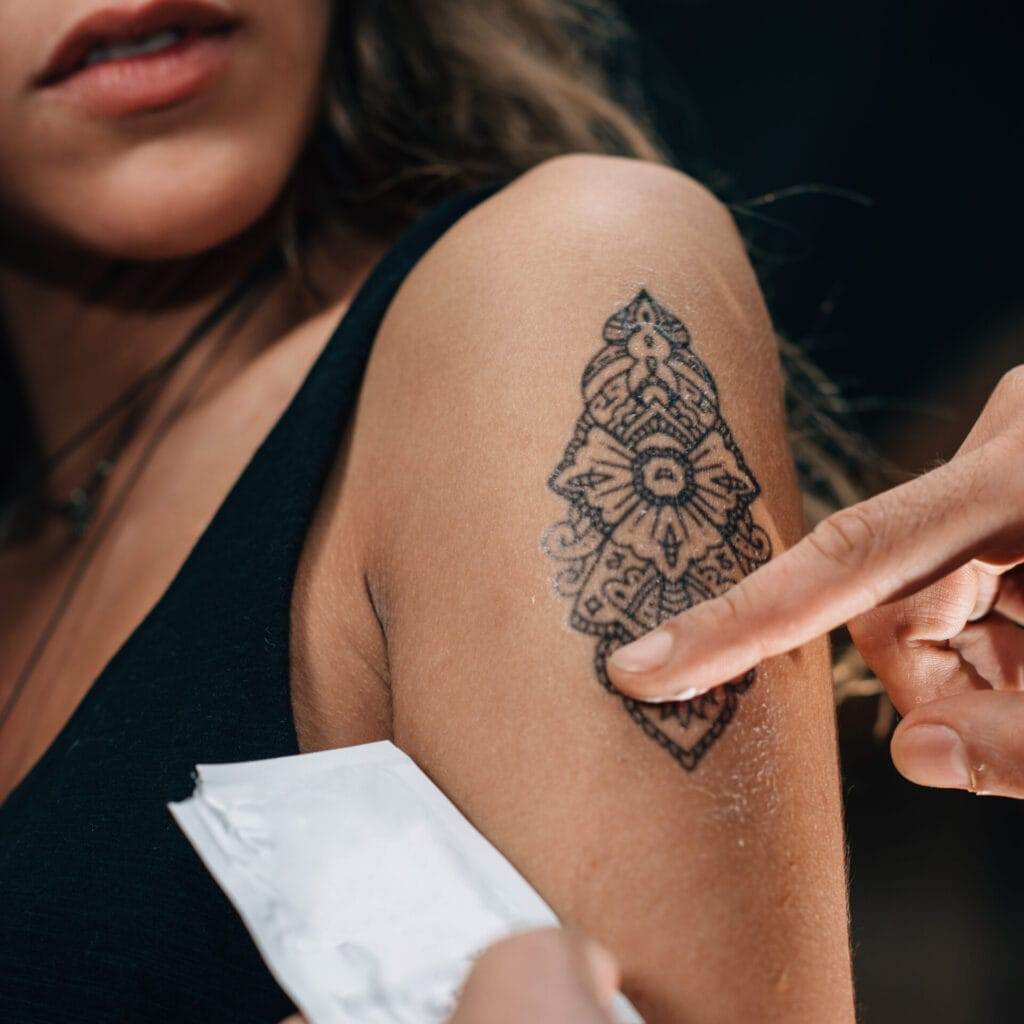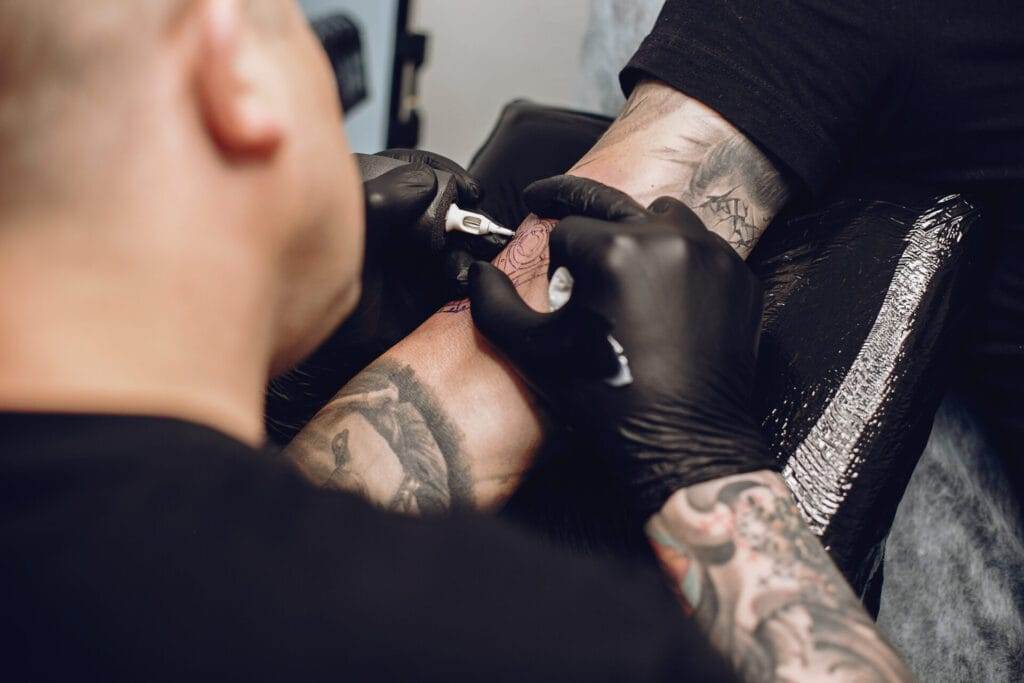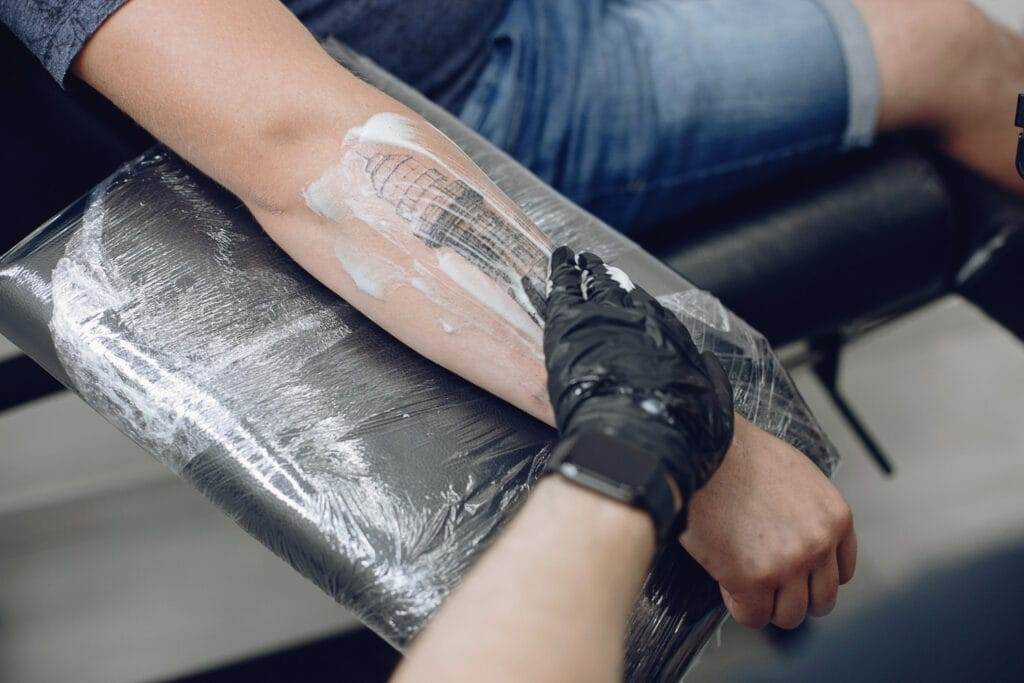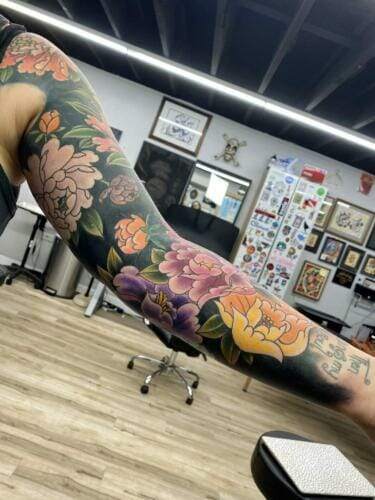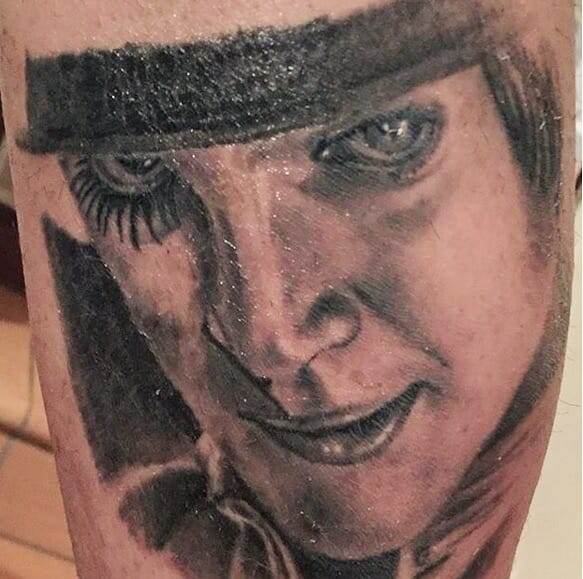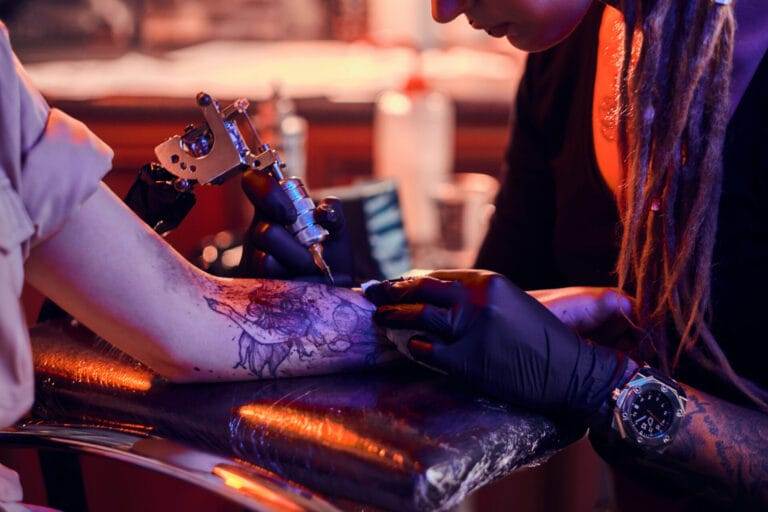
Covering up old tattoos has become a popular trend in recent years, with more and more people opting to transform their existing ink into something new and fresh. There are several reasons why individuals choose to cover up their old tattoos. Some may have gotten a tattoo when they were younger and now regret the design or placement. Others may have had a tattoo that has faded or become distorted over time. Whatever the reason, the desire to cover up old tattoos has led to a growing popularity in the tattoo industry.
Understanding the Different Types of Tattoo Cover-Up Options
When it comes to covering up old tattoos, there are several options to consider. One option is laser tattoo removal, which uses laser technology to break down the ink particles in the skin. This process can be time-consuming and expensive, but it can effectively lighten or remove the old tattoo, making it easier to cover up with a new design.
Another option is getting a cover-up tattoo, where a new design is created to cover the old tattoo. This option requires careful planning and skill from a talented tattoo artist who can strategically design a new tattoo that will effectively conceal the old one. The size and location of the old tattoo will play a role in determining what kind of cover-up design will work best.
Tattoo lightening is another option for covering up old tattoos. This involves using specialized techniques and pigments to lighten the existing tattoo before applying a new design. This method can be effective for tattoos that are too dark or dense to be covered up with a new design alone.
Factors to Consider Before Covering Up an Old Tattoo
Before deciding to cover up an old tattoo, there are several factors to consider. The age and condition of the old tattoo will play a role in determining what options are available for covering it up. Older tattoos that have faded or become distorted may be easier to cover up than fresh, vibrant tattoos.
The size and location of the old tattoo will also be important factors to consider. Larger tattoos may require more intricate cover-up designs, while tattoos in certain areas of the body may be more difficult to cover up effectively. It’s important to consult with a skilled tattoo artist who can assess the old tattoo and provide guidance on the best course of action.
Finally, it’s important to consider the desired outcome of the cover-up. Do you want a completely new design that completely conceals the old tattoo, or are you open to incorporating elements of the old tattoo into the new design? Communicating your expectations and concerns with your tattoo artist will help ensure that you are both on the same page and working towards a design that you will be happy with.
Preparing for a Tattoo Cover-Up Session
Before getting a tattoo cover-up, it’s important to properly care for the old tattoo. This may involve keeping the area clean and moisturized, avoiding sun exposure, and refraining from picking or scratching at the tattoo. Taking care of the old tattoo will ensure that it is in the best possible condition for the cover-up process.
It’s also important to discuss any allergies or medical conditions with the tattoo artist before the cover-up session. They may need to make adjustments to their techniques or materials to accommodate any sensitivities or health concerns.
Preparing mentally and emotionally for the cover-up process is also important. It can be a transformative experience to cover up an old tattoo, and it’s important to be open to the process and embrace the change. Take some time to reflect on why you want to cover up the old tattoo and what you hope to achieve with the new design. This will help you approach the cover-up session with a positive mindset.
Popular Tattoo Cover-Up Designs and Ideas
When it comes to covering up old tattoos, there are several popular design ideas that can effectively conceal the old ink. One approach is to use dark colors and bold designs to cover up the old tattoo. This can be particularly effective for tattoos that are faded or have lost their shape over time. By using dark colors and bold lines, the old tattoo can be effectively hidden beneath a new design.
Another approach is to incorporate new designs and elements into the cover-up. This can involve adding new elements that complement or enhance the existing tattoo, creating a cohesive design that incorporates both old and new elements. This approach can be particularly effective for tattoos that hold sentimental value or have personal meaning.
Using negative space is another creative way to create a new design around an old tattoo. By strategically using empty space around the old tattoo, a skilled artist can create a new design that effectively conceals the old ink. This approach can be particularly effective for tattoos that are small or located in areas where it may be difficult to completely cover them.
Creative Ways to Incorporate New Designs with Old Tattoos
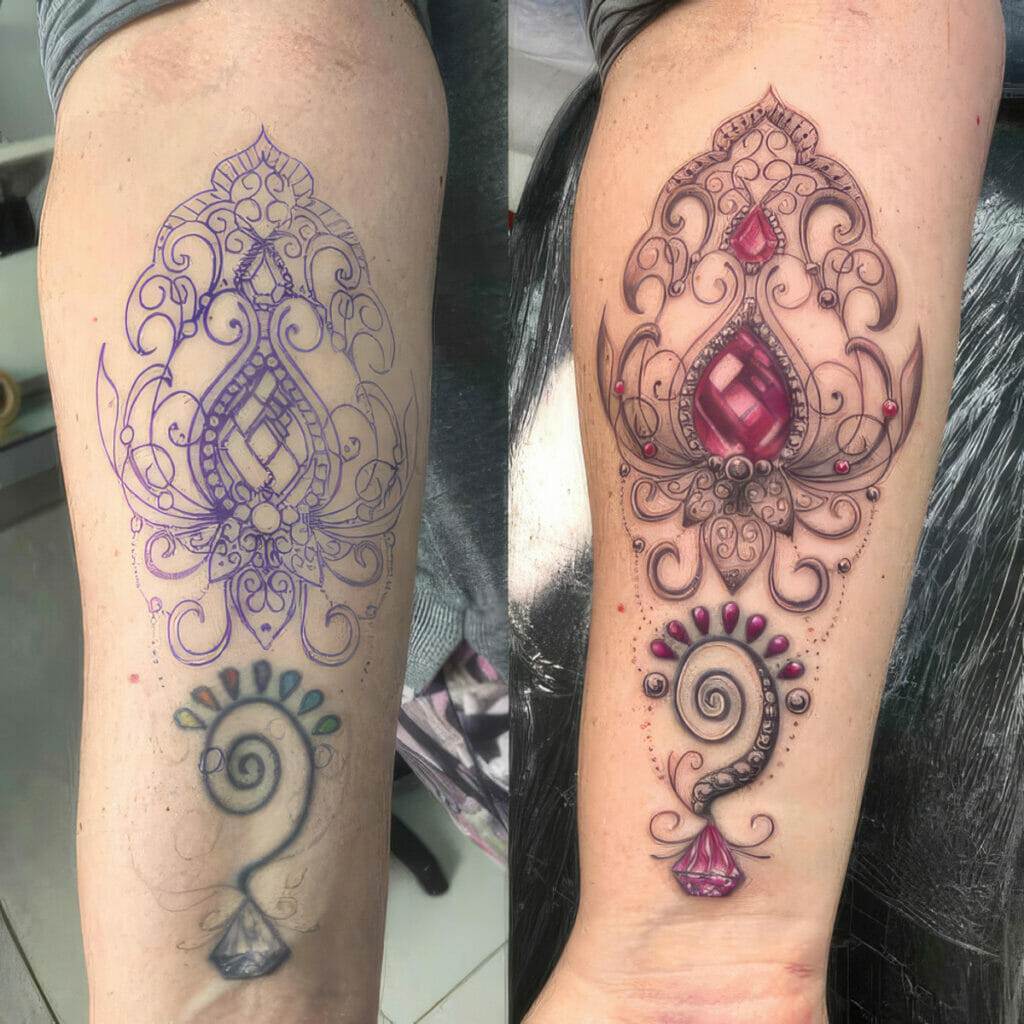
When covering up an old tattoo, there are several creative ways to incorporate new designs with the existing ink. One approach is to use geometric shapes and patterns to create a cohesive design. By incorporating geometric elements into the cover-up, the old tattoo can be seamlessly blended into the new design.
Adding elements of nature or animals is another way to blend the old tattoo with a new design. By incorporating natural elements or animals that complement the existing tattoo, a skilled artist can create a cover-up that seamlessly integrates both old and new elements.
Creating a new design that tells a story or has personal meaning is another creative way to cover up an old tattoo. By working with a skilled artist who can bring your vision to life, you can create a cover-up that not only conceals the old tattoo but also represents something meaningful to you.
Using Colors and Shades to Conceal Old Tattoos
Using colors and shades strategically can be an effective way to conceal old tattoos. One approach is to use lighter colors that blend with the old tattoo. By using lighter shades, the old tattoo can be effectively lightened and blended into the new design.
Shading techniques can also be used to create depth and dimension in a cover-up tattoo. By using shading techniques, a skilled artist can create the illusion of depth and texture, effectively concealing the old tattoo beneath layers of shading.
Color theory can also be used to create a harmonious design that effectively conceals the old tattoo. By understanding how different colors interact with each other, a skilled artist can create a cover-up that effectively blends with the existing ink.
Maintaining Your Tattoo Cover-Up for Longevity
Proper aftercare is crucial for ensuring that your tattoo cover-up heals properly and maintains its longevity. Follow your artist’s instructions for caring for your new tattoo, which may include keeping the area clean and moisturized, avoiding sun exposure, and refraining from picking or scratching at the tattoo.
It’s also important to avoid exposing your cover-up tattoo to harsh chemicals or abrasive materials. This can cause the ink to fade or become distorted over time. Be mindful of the products you use on your skin and avoid using anything that may be too harsh for your tattoo.
Touching up the cover-up as needed is also important for maintaining its longevity. Over time, the ink may fade or become less vibrant, so it’s important to schedule touch-up sessions with your artist as needed. This will ensure that your cover-up tattoo continues to look its best for years to come.
Tattoo Cover-Up Success Stories and Inspirations
There are countless success stories when it comes to tattoo cover-ups, with many individuals embracing their new tattoos and moving forward with confidence. Real-life examples of successful cover-ups can provide inspiration and encouragement for those considering covering up their old tattoos.
Before and after photos of cover-up tattoos can also be a great source of inspiration. Seeing the transformation from an old, faded tattoo to a vibrant new design can be inspiring and help individuals envision what is possible with a cover-up.
Inspirational stories of people who have embraced their new tattoos can also provide encouragement for those considering a cover-up. Hearing about others who have gone through the process and come out on the other side with a renewed sense of confidence can be empowering.
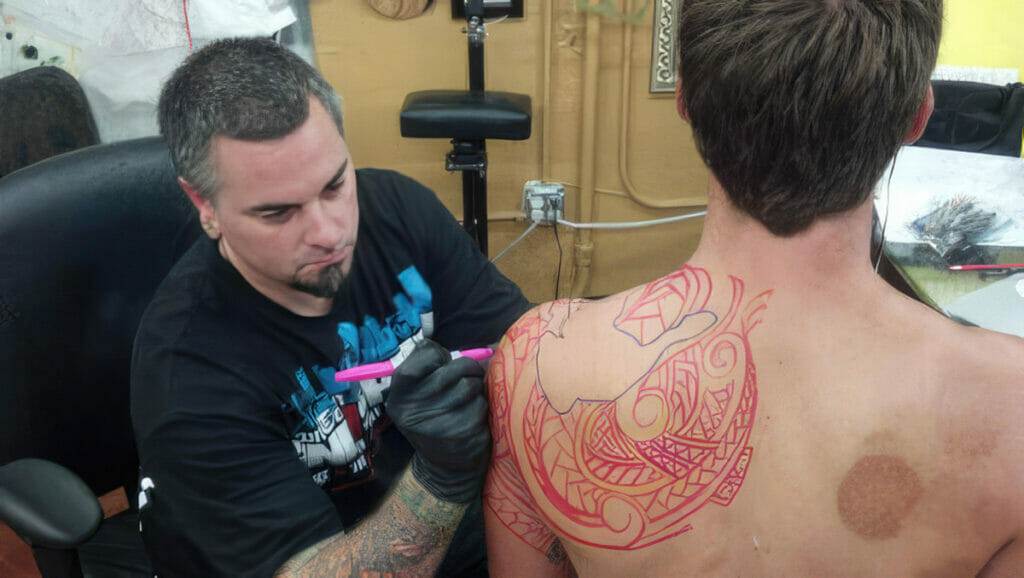
Embracing Your New Tattoo and Moving Forward with Confidence
In conclusion, covering up old tattoos has become a popular trend for many reasons. Whether it’s regretting a past design, wanting to update a faded tattoo, or simply desiring a fresh start, there are numerous options available for covering up old tattoos.
Choosing the right tattoo artist is crucial for achieving a successful cover-up. Researching and finding a skilled artist who specializes in cover-up work is key to ensuring that you are happy with the end result. Properly caring for your cover-up tattoo and scheduling touch-up sessions as needed will help maintain its longevity.
Ultimately, embracing your new tattoo and moving forward with confidence is the most important aspect of covering up an old tattoo. Tattoos are a form of self-expression and should be celebrated. By embracing your new design, you can create a fresh start and feel proud of the art on your skin.

